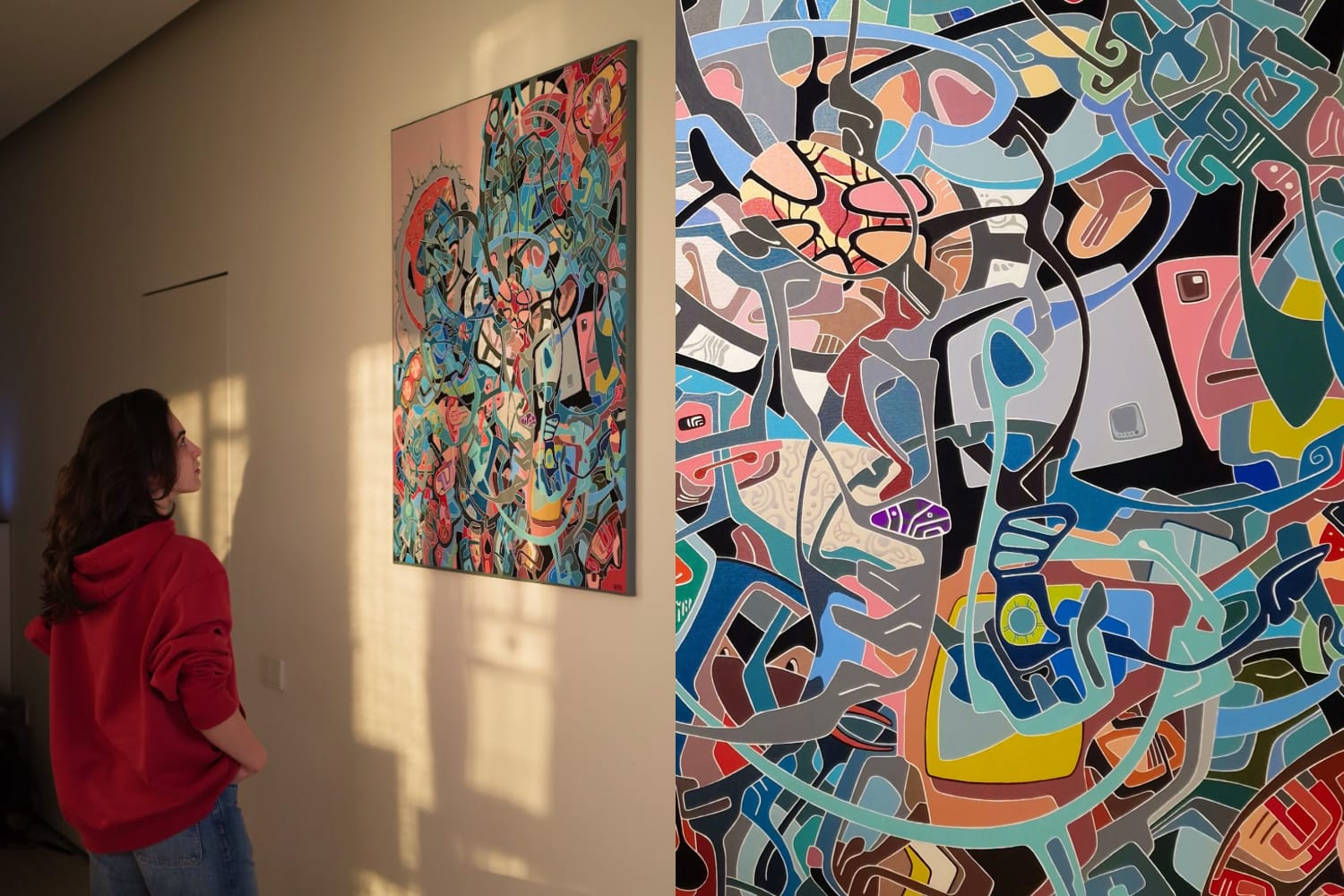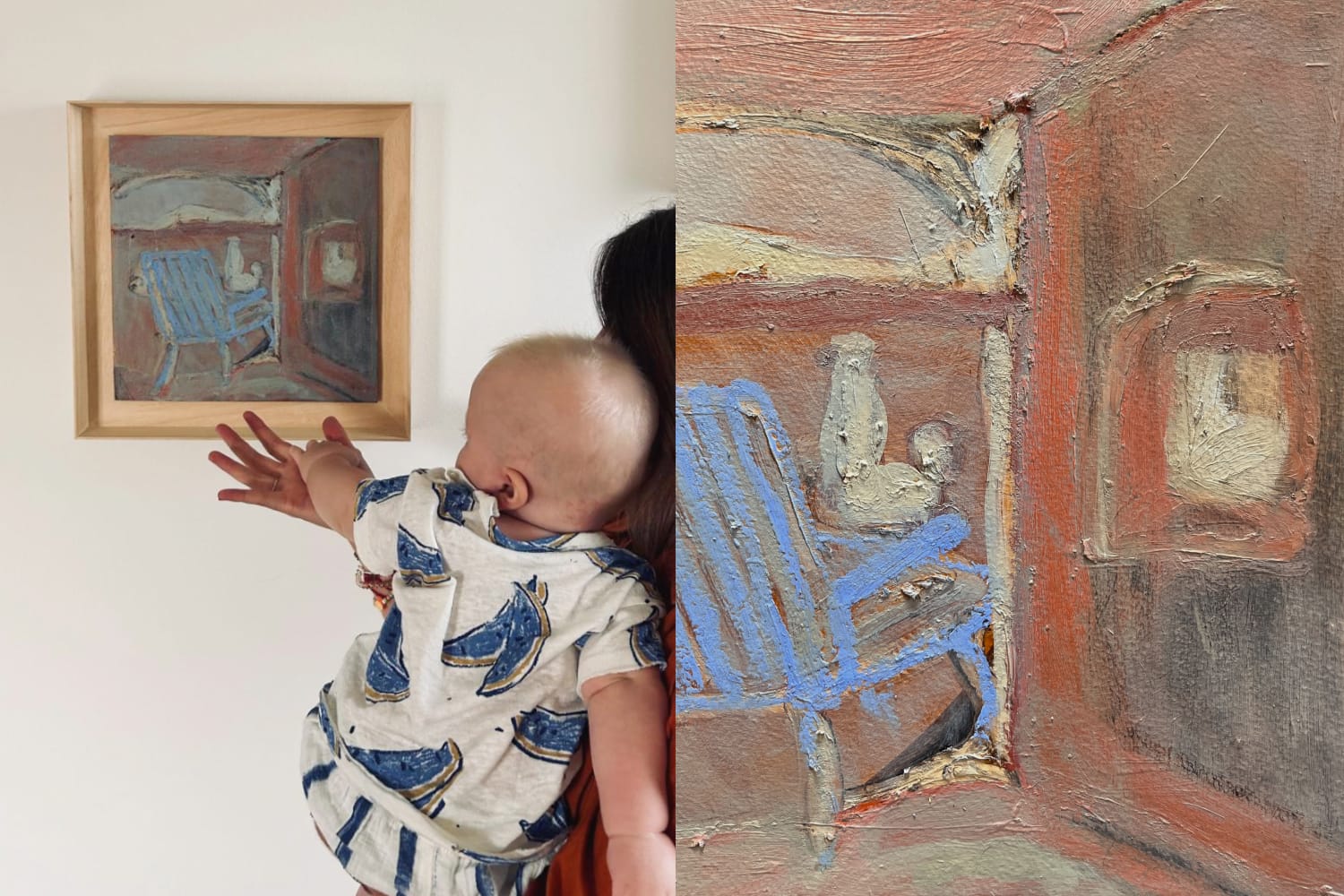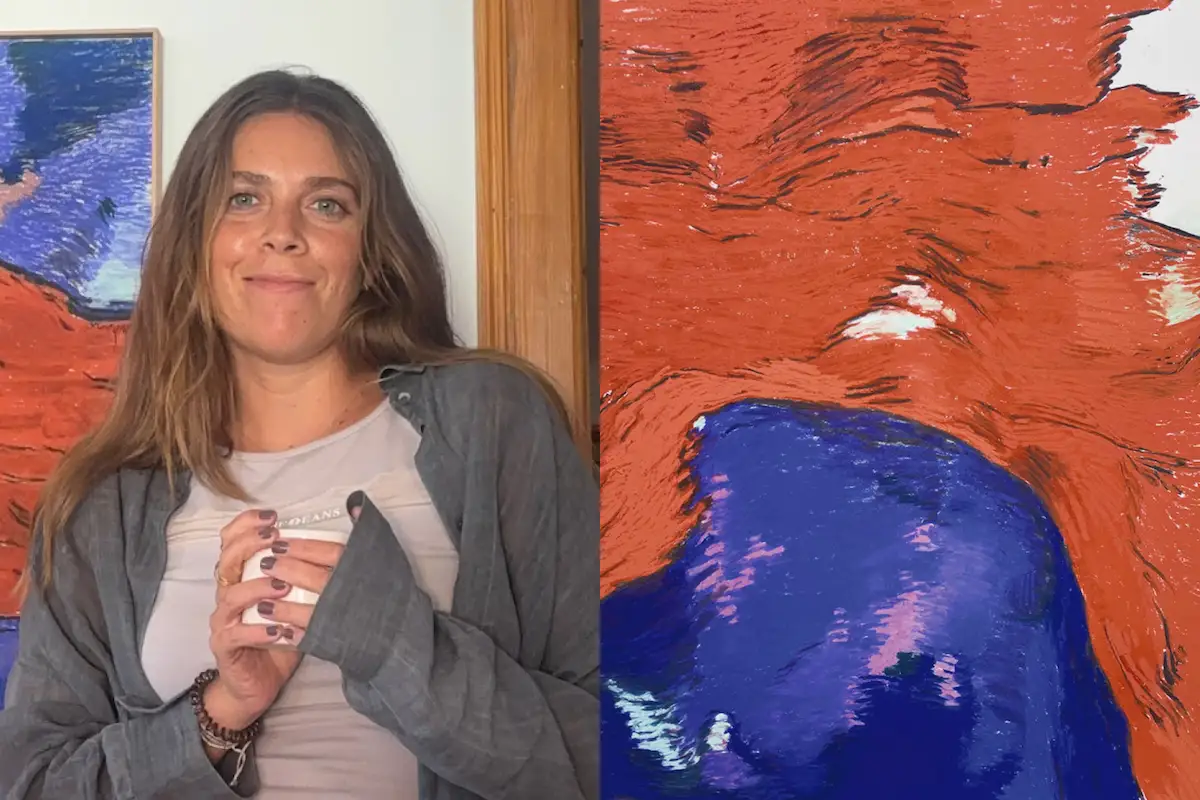Famous Chilean Artists & Paintings: A Guide to Chile’s Icons
Chile’s visual culture lands where the Andes and the Pacific meet, where folk memory runs straight through avant-garde experiment. This primer is your fast pass through the noise: the famous artists from Chile (why they matter, where to find their work), collectibility notes, a selection of museum-worthy highlights, and more. We keep the tone conversational, the claims sourced, and the shopping advice pragmatic. We also cast a light on famous artists in Chile working today so you can connect those early-modern dots to some of our current favorites.
Why Chilean Art Matters Now
Chile’s art is many things: a conversation between landscape and city, border and exile, ritual and concept. When collectors or Googlers ask for **famous chilean art**, they’re usually sensing that mix: the cosmological dreamscapes of Roberto Matta, the contemplative quiet of Claudio Bravo’s still lifes, the needle-sharp social gaze of Paz Errázuriz, the conceptual charge of Alfredo Jaar, the indigenous and eco-poetic thread running through Cecilia Vicuña’s quipus. It’s not one story; it’s several, braided.
For collectors, Chile offers range: museum-level blue chips (Matta; Bravo), historically pivotal figures with links to dictatorship and diaspora (Roser Bru, José Balmes, Lotty Rosenfeld/CADA), and globally visible contemporaries with high museum walls (Vicuña, Jaar). You can collect drawings and works on paper without mortgaging the house, or, if the budget allows, pursue canonical paintings with strong provenance.
A Fast Timeline: From Early Moderns to Today
Late 19th / Early 20th century foundations. Painters like Juan Francisco González and Camilo Mori pushed Chile into modern painting-taking in Impressionist light and post-Impressionist structure, then domesticating it. Works by both anchor the public collections in Santiago.
Mid-century to 1960s. Roberto Matta takes Chile into the global Surrealist scene, then moves toward Abstract Expressionism in New York; his canvases are now de rigueur at major museums.
1970s–80s (dictatorship years). Art is used as a weapon of memory and resistance: the CADA collective’s urban interventions, Lotty Rosenfeld’s "Una milla de cruces…," Roser Bru’s politically charged canvases, José Balmes’s memorialist paintings.
1990s–present. Post-dictatorship, Chile’s museums are expanding, new voices are traveling internationally. Alfredo Jaar’s installations refract mass media and ethics; Cecilia Vicuña’s quipus recontextualize Andean knowledge systems for global institutions from Tate to the Venice Biennale.
Famous Chilean Artists (Spotlight Profiles)
Roberto Matta (1911–2002)
The great Chilean voice of Surrealism, Matta painted “inscapes”—immense psychological architectures where biomorphic forms are at once celestial and catastrophic. Signature work: The Vertigo of Eros (1944, oil on canvas), MoMA—what writer Roberto Bolaño called an “atmospheric field of charged space” that threaded Paris Surrealism to American abstraction. Why he matters: He opened a door between the two movements and mentored a younger generation of artists. Collecting note: Museum-scale canvases are still in the seven-figure realm; drawings and prints offer entry points, provided provenance and condition are excellent.
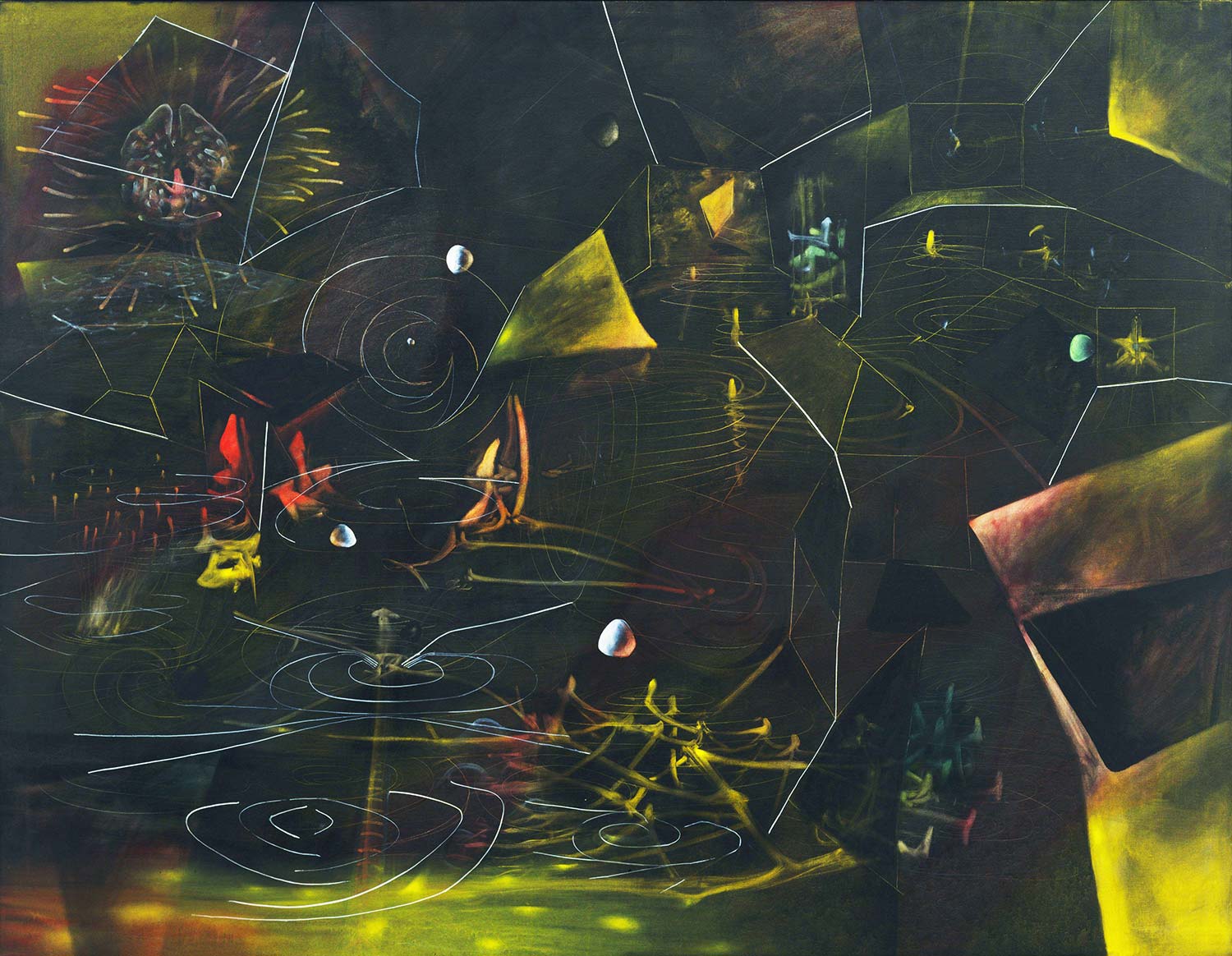
A storm of biomorphic forms and chromatic space, this canvas shows Matta at full Surrealist power, already leaning toward the American postwar gesture.
Claudio Bravo (1936–2011)
A virtuoso of hyperrealism, Bravo made drapery and twine seem as intense as portraiture. His signature “packages” (bundles of paper, string, and tape) elevate their humble materials into meditations on light and tactility. Signature work: White Package (1967, chalk, conté, ink on paper), MoMA. Why he matters: Bravo’s was a discipline equal parts Old Master and modern restraint, reasserting painting’s ability to astonish without spectacle. Collecting note: The still lifes and portraits dominate; works on paper are far more accessible. Auction histories show steady demand and occasional spikes for top-level examples.
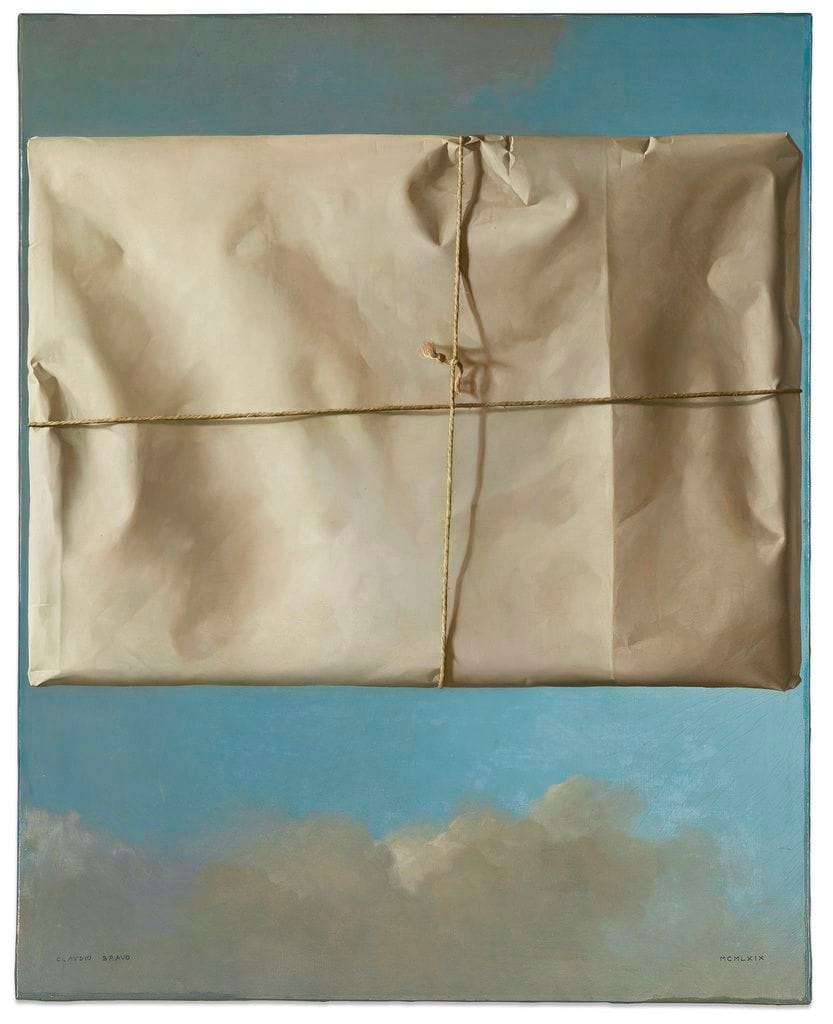
Violeta Parra (1917–1967)
Known to the world as a musician, Parra was also a potent visual artist—arpilleras (embroideries), papier-mâché, and painting. In 1964, she presented tapestries and works at the Musée des Arts Décoratifs, Louvre (Marsan Pavilion), one of the first solo shows in the collection’s history. Signature work: La cueca (1962, embroidered textile), Museo Violeta Parra. Why she matters: Parra folds folk memory into a modern visual language, a reminder that Chilean modernism is broader than oil on canvas. Collecting note: Museum-held works are cornerstones; examples on the market demand careful rights and condition checks.
Roser Bru (1923–2021) / José Balmes (1927–2016)
Spanish exiles whose work came to define Chile’s “political modernism.” Bru’s layered canvases weave together image, text, and history: see Cal, cal viva (1978, MAC Santiago), made in response to dictatorship-era atrocities. Balmes built dense memorial paintings, like Los desaparecidos (1978, Museo de la Solidaridad Salvador Allende). Why they matter: They turned painting into testimony. Collecting note: Works have shown up in Chilean- and Spanish-focused shows; look for strong provenance and exhibition history.
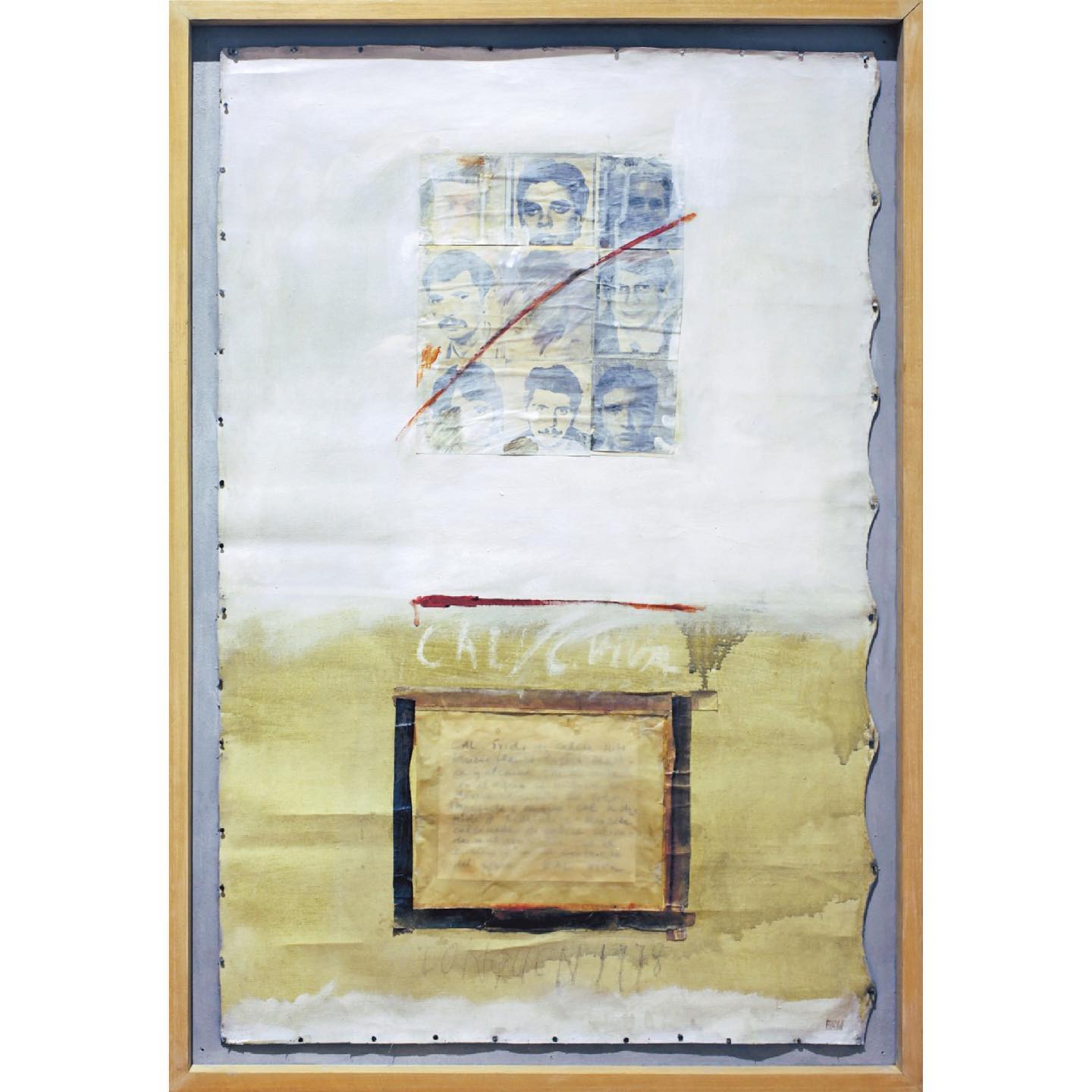
Cecilia Vicuña (b. 1948)
Poet, artist, activist. Vicuña’s quipu installations—braided sculptures of fiber and found objects—revive Andean knowledge systems as contemporary sculpture. Signature: the monumental quipus installed in Tate Modern’s Turbine Hall (2022). Why she matters: She threads Indigenous perspectives and eco-poetics into the frames of global institutions. Collecting note: Editions and works on paper, and smaller installations exist, but institutional demand is robust; documentation is key.
Alfredo Jaar (b. 1956)
Jaar interrogates the politics of images: How they shape ethics, what we see and what we refuse to look at. Signature work: Real Pictures and projects around Rwanda; MoMA and Tate hold major pieces. Why he matters: He reframes spectatorship (and asks what makes a picture worth looking at). Collecting note: Photographic/installation works require stewardship (materials, display considerations). Installation instructions, lender histories are a must.
Paz Errázuriz (b. 1944)
One of Chile’s defining photographers, Errázuriz has documented her country’s most marginalized communities with rigor and dignity. Why she matters: Her portraits reset the power dynamic between lens and subject. Recent retrospectives and critical essays underline her influence. Collecting note: Seek vintage prints or, if buying later editions, thoroughly documented examples; print information and provenance must be confirmed.
Lotty Rosenfeld / CADA (1979–85)
Rosenfeld’s street action Una milla de cruces sobre el pavimento (1979) bisected traffic lines with horizontal and vertical rows of white tape, folding dissent into the mundane quotidian. Alongside CADA, she helped invent a grammar of public art in a state of repression. Why it matters: It turned the street into a studio. Collecting note: The works often exist as photo/video documentation and artist books; holdings at the institutional level are strong.
Nemesio Antúnez (1918–1993), Camilo Mori (1896–1973), Juan Francisco González (1853–1933)
Pillars of Chilean modernism, who are especially visible to visitors to Santiago’s museums. Antúnez—painter/printmaker and founder of Taller 99, a touchstone artist-run space—bridged the studio and institution; Estadio negro (1978) is emblematic. Mori—color, composition, the interaction of structure and light; El boxeador (1923) lives at MNBA. González—intimate florals and landscapes, some of which are small-format masterclasses in color and light; Manzanas anchors MNBA holdings. Collecting note: Works circulate in Chile’s public discourse; museum-deaccessioned prints and minor works occasionally appear.
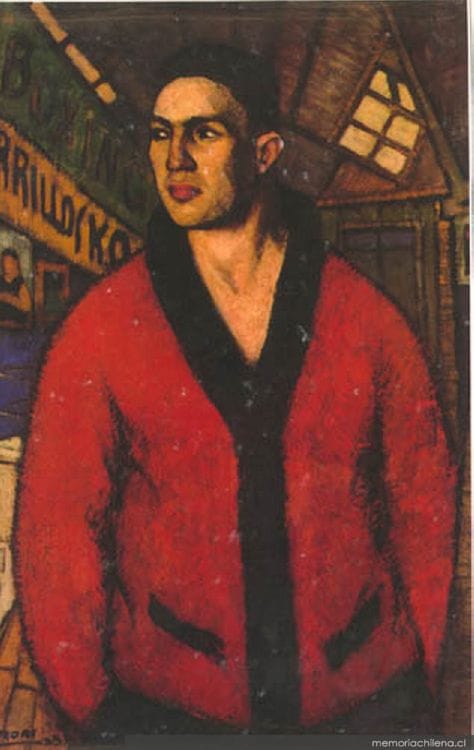
Where to See Chilean Art (Museums & Spaces)
- Museo Nacional de Bellas Artes (MNBA), Santiago. 19th–20th-century anchors (Mori, González, Antúnez) and key holdings.
- Museo de Arte Contemporáneo (MAC), Santiago. Discourses of the post-1950s; Bru’s Cal, cal viva, and a steady diet of contemporary shows.
- Museo de la Solidaridad Salvador Allende (MSSA), Santiago. Unique collection, grown through international donations. Balmes served as director.
- Museo Chileno de Arte Precolombino, Santiago. Andean textiles and ceramics, world-class pre-Columbian holdings.
If you’re planning to see famous art in Chile on a short trip, these four will give you range in a couple of days. Here’s also where you’ll consistently encounter famous art from Chile in the flesh.
Collectability & Market Notes
Established auction presence
Matta’s canvases turn up regularly at major houses; strong examples command significant sums. Bravo’s top still lifes and portraits remain in demand; wrapped “packages” are collector catnip.
Mid-career & emerging
Chile’s scene is rich in conceptualism, photography, and socially engaged practice; look for solid exhibition histories (national museums, biennials) and primary-gallery support.
Provenance & documentation
For Chile-origin works (especially 1960s–80s), ask for exhibition records, institutional loans, and any restoration notes.
Condition & climate
Works that traveled or were stored under variable conditions may show surface stress. For mixed-media (Bru) and textiles (Parra), ensure professional conservation advice.
Price sanity checks
Cross-reference primary-gallery asks with recent results
Cultural Crossovers: Musicians with Visual Footprints
Chile’s queries often blend music and art because some musicians are also visual artists or collaborators. Violeta Parra’s arpilleras are museum pieces, not just album lore. Los Jaivas mixed concert visuals and Andean iconography; Víctor Jara’s image work and design ties are part of his archive; Mon Laferte has exhibited her own paintings publicly. Consider this a teaser—we’ll unpack the crossovers in a dedicated piece soon.
FAQ
Who is the most famous Chilean painter?
Many vote Matta; for hyperrealist finesse, Bravo is often the runner-up. Ask who the most famous artist in Chile is and you’ll still hear those two names.
What is the most famous Chilean painting?
Contenders include Matta’s mid-’40s Surrealist canvases; in Chilean collections, Mori’s El boxeador and Antúnez’s Estadio negro are widely taught.
What museums in Chile are best for art?
MNBA, MAC, MSSA, and the Museo Chileno de Arte Precolombino—each covers a different slice of the story.
How does Chilean art differ from other Latin American schools?
It leans hard into conceptual strategies and public actions (CADA), folds exile/memory into painting (Bru/Balmes), and keeps a live thread to Andean knowledge (Vicuña).
Chile’s icons travel well because they speak two languages at once: the intimate (paper, string, stitch) and the planetary (memory, power, ecology). Whether you’re chasing famous chilean painters of the 20th century or mapping the conceptual turn, you’ll find a scene that rewards close looking—and careful collecting. If you’re Googling Chile's famous artist,” you’ll land on Matta or Bravo. Stay a minute longer and you’ll hear many more voices.

